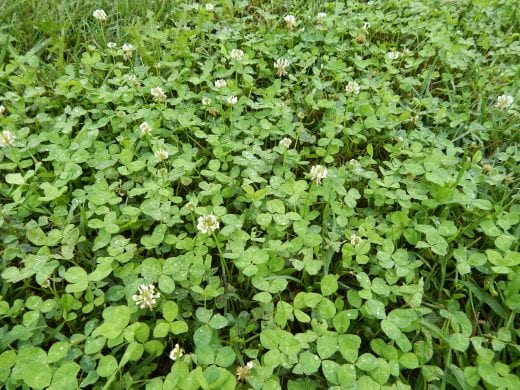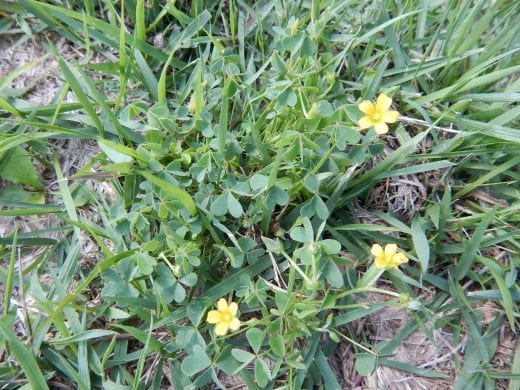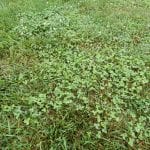(By Jared Hoyle, KSU Turfgrass Research and Extension)
White clover is one of the most common weeds found in cool-season turfgrass. It can grow in a wide range of environmental conditions and can tolerate many of our cultural practices. It can also spread by seeds and by stolons. White clover is a perennial broadleaf weed that has trifoliate leaves that may or may not have a wedged-shaped mark. Although it is called white clover the flowers are white but may turn pink as they age.
Because white clover can fix its own nitrogen some see it as an important species to add beneficial soil nitrogen. There had been some work done to explore using both clover and turfgrass in a mixture in their lawns. Others may consider it as a weed.
If you consider it a weed, fall is a great time to try and control it. But did you know 2,4-D, glyphosate and sulfentrazone do not control white clover?
For best control herbicides that contain clopyralid, dicamba, fluroxypyr, florasulam, metsulfruon, and/or quinclorac (also controls crabgrass) provide the best control when applied in the fall.
Yellow woodsorrel (Oxalis stricta) is a perennial or annual broadleaf weed that has clover-like trifoliate heart shaped leaves. Yellow woodsorrel most commonly spreads by seeds that are contained in a capsule that when it explodes ejects the seeds. It can be confused with clover but has yellow flowers with five petals. You can find this weed in a wide range of soil conditions and can commonly be confused with black medic, birdsfoot trefoil and white clover. A similar species is creeping woodsorrel but it is most commonly found in landscape plantings while yellow woodsorrel is most commonly found in turf.
To control oxalis, herbicides that contain triclopyr and fluroxypyr are very effective.
Herbicides that contain fluroxypyr include;
- Battleship III
- Escalade 2
- Momentum FX2
- Tailspin
- Vista XRT
Herbicides that contain triclopyr include;
- 2-D
- 4-Speed XT
- Battleship III
- Chaser
- Chaser 2 amine
- Confront
- Cool Power
- Eliminate
- Horsepower
- Momentum FX2
- Tailspin
- Three-Way Ester II
- Turflon Ester Ultra
- Turflon II amine
- Triclopyr 4
- TZONE
Always remember a healthy turfgrass stand through proper maintenance is the best weed control and can help minimize clover and yellow woodsorrel in you turfgrass.
Information from this post if from “Turfgrass Weed Control for Professionals” To get your copy today click here – https://www.bookstore.ksre.ksu.edu/Item.aspx?catId=545&pubId=20239
Always remember to READ THE LABEL for the correct rate, turfgrass tolerance, and specific instructions before application!!!
***Mention of trade names or commercial products in this article is solely for identification purposes and does not imply recommendation or endorsement, nor is criticism implied of similar products not mentioned by Kansas State University.***
Don’t forget to follow me on twitter @KSUTurf.
Also, visit our facebook page www.facebook.com/KSUTurf



